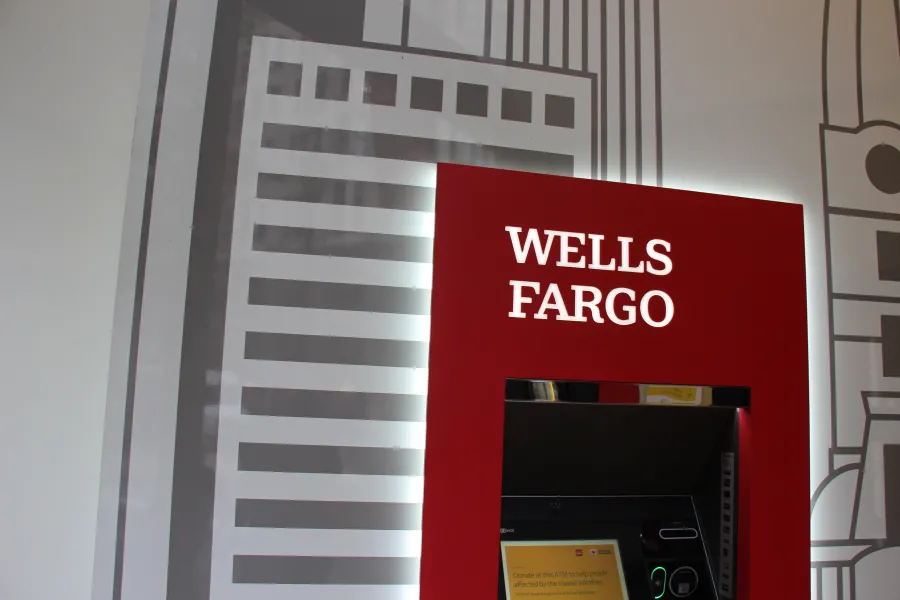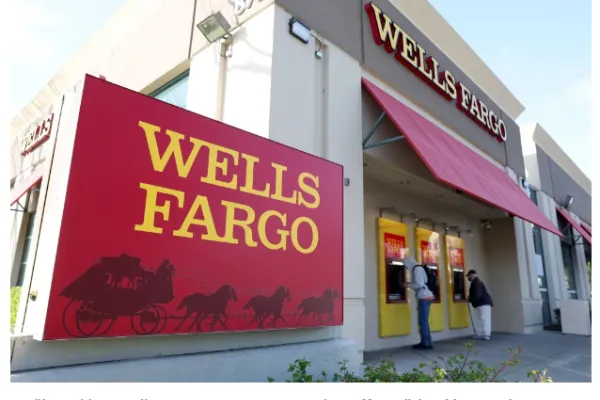American Prospect: Organizing Wells Fargo

This story first appeared in The American Prospect.
The campaign to unionize workers and rectify banking practices at America’s most notorious bank now reaches across the nation.
This past April, Bloomberg News reported on an internal Wells Fargo PowerPoint presentation shared among the bank’s executives. It displayed increasing concerns about their workers organizing with the Communications Workers of America (CWA), a years-long effort in the making that could soon pay off.
They have reason to worry. Wells Fargo Workers United, made up of around 900 workers in 29 states, has been organizing the bank’s employees across the country. They come from call centers, teller windows, and corporate offices—different departments, different workplace environments, and different states. What they share is a sincere desire to make Wells Fargo a better bank—both for themselves and for their customers.
The organizing drive originated with the Committee for Better Banks, a coalition of bank workers, labor unions and consumer advocacy groups seeking to improve working conditions in the banking industry.
Stephen Lerner, a veteran union organizer who helped found the Committee for Better Banks, first got involved with the project through his contacts with union bank workers in Brazil, who called on their American colleagues to organize. “Their standards in Brazil were being threatened by how low wages were in the United States, because they had banks that were union in Brazil and non-union here,” he says. UNI Global Union, a global union federation for the skills and service sectors, including bank workers around the world, is a member of the Committee for Better Banks coalition. The globalization of major banks means that labor conditions and financial practices in one part of the world can affect and or undercut labor conditions and financial standards elsewhere. Hence, the unions’ cross-border concerns.
Wells Fargo, however, is primarily a domestic bank, with a minimal presence in other countries. What sets it apart as an organizing target is its outsized notoriety. The 2016 fake accounts scandal, in which its employees were forced by the company to open fraudulent accounts for customers in order to meet impossible sales goals, took a real toll on workers who are on the front lines of customer interactions. Workers would be expected to hit monthly, weekly, daily and even hourly sales goals, and employees who failed to do so would lose their jobs. Juan, a call center employee from Lubbock, Texas, has been at Wells Fargo for over 12 years and was working in customer service during the scandal. He says of the experience, “It seemed like there was always a fresh set of new employees coming out of training every six weeks to replace all the employees that were let go. If you spoke up, that just gave them another reason to let you go.”
The steps the company has taken since then to reform its image have been more cosmetic than systemic. A few years ago, the then-recently appointed CEO Charles Scharf agreed to meet with the Wells Fargo organizing committee within the Committee for Better Banks, Afterwards, says Nick Weiner, an organizer with CWA, “there was a moment where folks said, ‘we’ve had four CEOs in five years. We’re sick and tired of giving the bank another chance to reform themselves.’ It was right before the Starbucks [organizing campaign] took off, and folks just said, ‘you know what: We want to organize a union.’”
The new leadership at Wells Fargo has not made things better for workers. The company has recently undertaken massive ongoing layoffs in different parts of the country, most recently laying off over 360 workers in a call center in Hillsboro, Oregon in August. Earlier this year, Wells Fargo laid off over 90 employees in the Des Moines metro area and 103 workers in Orlando.
Meghan Merez, a former customer resolution representative in Oregon who was recently laid off along with her entire department, was an active organizer with WFWU and had once filed an unfair labor practice with the NLRB for management taking down the union flyers she’d posted around the call center. She notes that the company had been insistent on bringing workers back to the office full time last year despite the objections of employees. “It wasn’t fair that we had to be in the office, our cost of living [in the Portland area] is higher than everywhere else, and we’re effectively getting paid less. And it was always met with this hostility, like we can’t do anything about it, and we won’t do anything about it.”
The diversity of workplace environments has required a diversity of organizing tactics. Mandy [name changed to protect identity], a banker who works with wealthy clients in a bank branch, says that the organizing pitch that employees in large call centers find compelling doesn't work in bank branches, which rarely have more than a handful of employees. “There is a distinction between the employees that are customer facing and those who are not, and a lot of it stems from different pressure points for people,” she says. While talking points that emphasize the company’s misdeeds are effective in call centers, where many employees have to deal with the legal and regulatory consequences, it hasn’t worked for branch employees who already face the brunt of customer complaints every day.
Dalton [name changed to protect identity], a personal banker also based out of a branch, agrees. “I focus on the positives, what we stand to gain by unionizing on a personal level or branch level, and also how it affects the nation.”
There are also differences in demands across departments. In call centers, a major issue among workers has been the pressure from management to return to in-person work, even though employees see themselves as more productive working from home and have voiced a strong preference for remote work. In bank branches, which have always been in-person, concerns about staffing levels and fair wages are paramount.
Despite the multifaceted nature of the campaign, workers have established lines of communication with each other through social media. Merez found out about WFWU through a post on Reddit. WFWU has an active TikTok account where workers share their stories and why they’ve decided to get involved. Senior compliance officer Jessie McCool, based in St. Louis, has had success increasing awareness about the union drive through posts on LinkedIn—whose viewers have included senior bank executives, whom she has noted appear to be tracking her posts. Organizing meetings are held on Zoom, and information is shared through group chats. It’s a technologically savvy organizing drive, fit for workers who are used to tech-heavy workplace environments.
During this year’s annual shareholder meeting, the AFL-CIO Reserve Fund put forward a resolution requesting that Wells Fargo adopt and disclose a policy respecting their workers’ right to freedom of association, and committing to non-intervention in case they decide to organize. The proposal did not pass, although fully one-third of shareholders voted in favor. In a proxy statement, the bank formally recommended voting against the proposal, claiming that it was “unnecessary and not in the best interests of our employees or shareholders”. The AFL-CIO plans to re-introduce this resolution during next year’s shareholder meeting, and organizers are optimistic that it could pass and send a strong message to company executives.
Wells Fargo Workers United and the Committee for Better Banks are part of the Bargaining for the Common Good network, in which workers see themselves as agents of change beyond their immediate workplace and in the broader community. Campaigns which use this framework operate as coalitions organizing towards goals that don’t begin and end with a contract. Bargaining for the Common Good successes include teachers who went on strike in Oakland, California earlier this year for a slate of demands including affordable housing and a task force on reparations, the United Teachers of Los Angeles winning a tentative agreement including housing support for students and climate commitments in school buildings, and the Chicago Teachers Union, whose ongoing organizing successes have resulted in electing Brandon Johnson as the city’s mayor.
This lens through which to view labor organizing is particularly relevant to the traditional banking industry, which is among the most highly regulated sector in the economy. In his book Inequality, Uncertainty, and Opportunity: The Varied and Growing Role of Finance in Labor Relations, Christian Weller argued that Bargaining for the Common Good is a given when it comes to organizing bank employees. “Workers will not be successful in organizing in the United States if their finance industry does not have greater regulation,” he wrote, “and reform of the industry will not work in the long run unless unionized workers are empowered to be the frontline against predatory bank practices that damage consumers and threaten the economy.”
WFWU members do see themselves as part of a much bigger struggle than their immediate workplace conditions. “If you go back to when unions were big on a national level, they made a lot of positive change, and I think this is an opportunity to really change everything,” Dalton says. “My biggest motivator, personally, is trying to change the world.”
Orlando Business Journal: More local Wells Fargo employees seek to unionize
American Banker: Wells Fargo gives $1,000 bonus to its lower-paid employees
BLOOMBERG LAW: Wells Fargo Becomes First Major US Bank With a Unionized Branch

